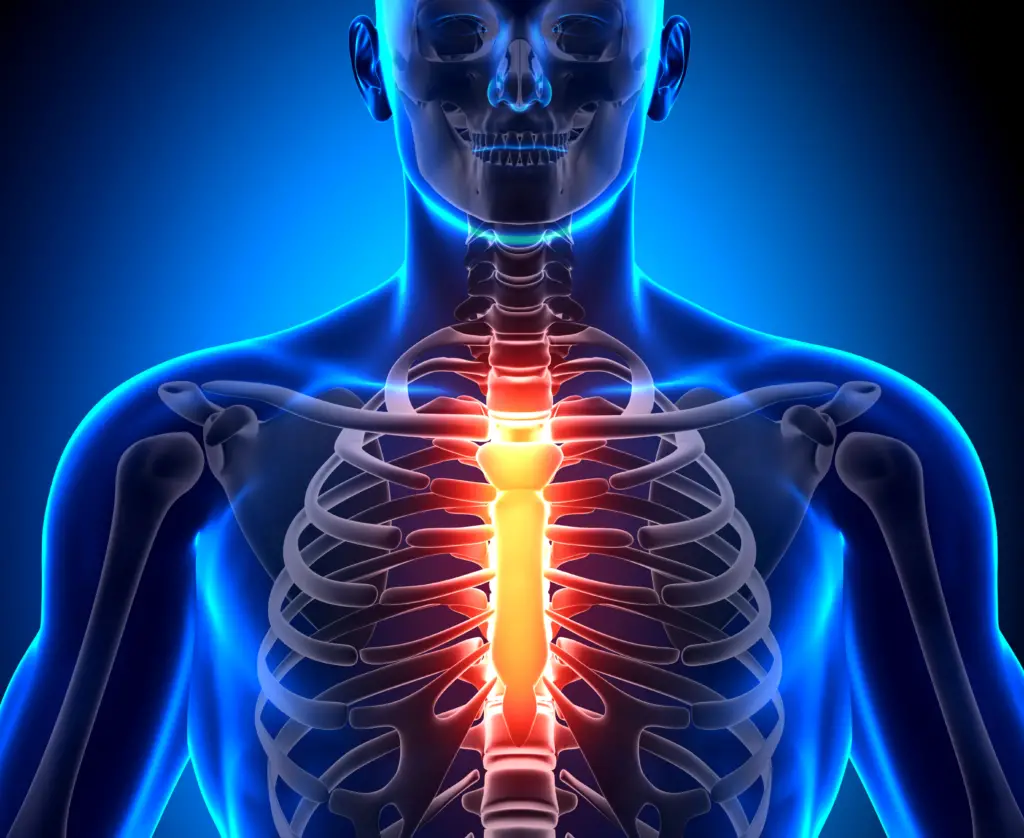In the dynamic field of radiology, radiologists continually balance their deep understanding of human anatomy, the operation of sophisticated technology, and providing sensitive patient care.
Among the myriad procedures they perform, one examination often stands out due to its complexity – the Portable Sternum X-Ray.
Understanding the Challenges of Portable Sternum
X-Rays Portable X-ray machines offer the convenience of mobility, bringing radiological services directly to the patient. Despite their numerous benefits, these devices present unique challenges, especially when imaging intricate anatomical areas like the sternum.
This centrally located bone, nestled between the lungs and protected by the ribs, often proves elusive on radiographs, giving radiologists a run for their money.

Dealing with Variability in Patients
Complicating the process further are the factors such as the patient’s body habitus, respiratory status, or level of comfort. A patient’s body structure can significantly affect the quality and clarity of the sternum image.
Meanwhile, respiratory conditions might make it challenging for patients to hold their breath during the scan, essential for a clear image. Furthermore, ensuring the patient’s comfort during the procedure is paramount, as the discomfort can lead to patient movement, blurring the resulting image.
Enhancing Technique and Positioning for Sternum X-Rays
Refining the technique and patient positioning forms the cornerstone of effective sternum X-rays. Capturing a clear sternum image while ensuring patient comfort and safety often becomes a delicate balancing act.
Right Anterior Oblique Positioning: The Common Starting Point
Radiologists frequently start with a technique involving 60kvp@100mas with Right Anterior Oblique (RAO) positioning. However, this approach, while useful for a general overview, may not always yield the best detail for the sternum due to overlying anatomical structures.
Enhancing Visibility with Adjusted Techniques
Many radiologists recommend adjusting the standard procedure to visualize the sternum better. A popular suggestion includes a slight RAO tilt combined with a long exposure time, usually around 3 seconds.
The underlying principle behind this strategy is to bring the sternum as close as possible to the Image Receptor (IR), minimizing overlying structures’ shadowing.

Improving Image Clarity with Patient Instruction
Radiologists are vital in guiding patients to adopt the correct posture and perform the necessary movements during imaging.
So, by instructing the patient to take a deep breath and slowly exhale while keeping their body stationary during the exposure, lung markings overlying the sternum can be blurred, enhancing the sternum’s visibility on the X-ray.
Overcoming Portable X-Ray Limitations
Understanding and working within the inherent limitations of portable X-rays are essential aspects of successful sternum imaging.
A typical challenge involves the shadows of the ribs and lungs obscuring the sternum. Overcoming this issue involves an interplay of technical adjustments.
Navigating Shadows with High mA and Low kV
The key to tackling the shadows cast by surrounding structures lies in adjusting the machine settings. Hence, Using a high mA, low kV, and a long exposure time has been shown to blur out the shadows of the ribs and lungs, providing a clearer view of the sternum.
Positioning for Lateral Views
Capturing lateral views of the sternum presents another challenge. Ensuring clear images involves precise patient positioning. Patients are advised to lock their hands behind their backs and push the sternum or chest forward.
This position helps to prevent the humeral heads from overlapping the sternum, ensuring a clearer lateral view.
Leveraging Modern Technology in Portable Sternum X-Rays
Advancements in technology have revolutionized all medical fields, including radiology. Modern equipment can help overcome some traditional challenges associated with sternum imaging.
Exploring the Role of Modern Equipment
Emerging technologies offer new possibilities for improving sternum imaging. These range from machines with higher image resolution to software capable of enhancing image quality and clarity.
Additionally, certain equipment may offer better patient comfort and ease of positioning.
Conclusion
Mastering the art of Portable Sternum X-Ray requires a combination of skill, knowledge, and the right attitude. With each patient and each challenge encountered, radiologists have an opportunity for learning and professional growth.
By continually refining their techniques, staying updated on the latest technological advancements, and focusing on excellent patient care, radiologists can rise to the challenge, turning an obstacle into an opportunity for growth.

